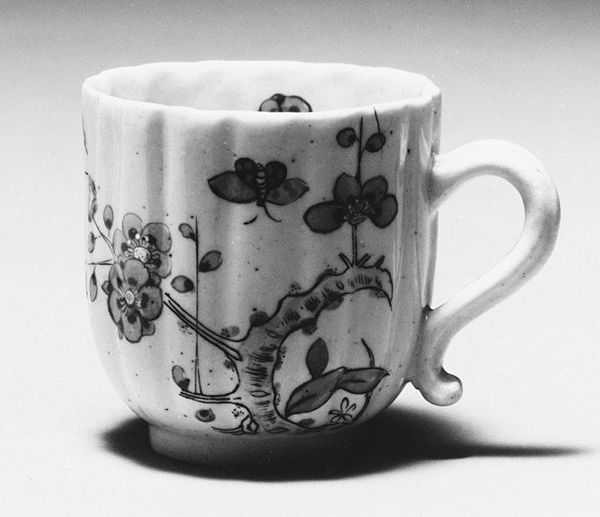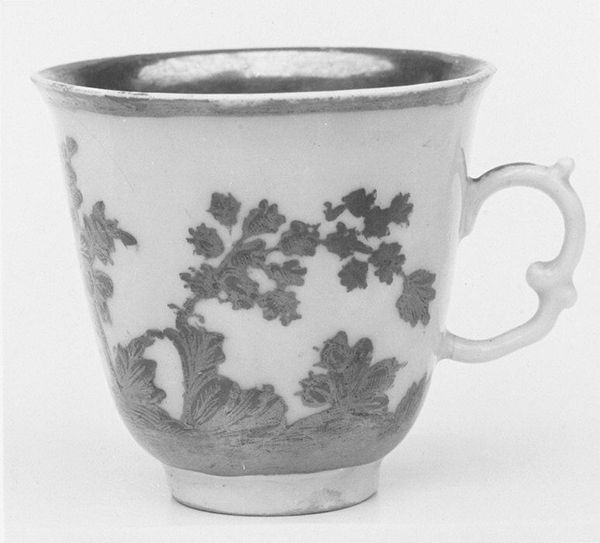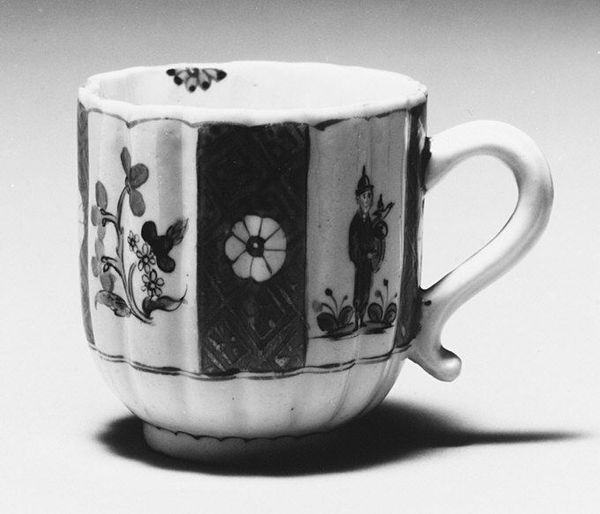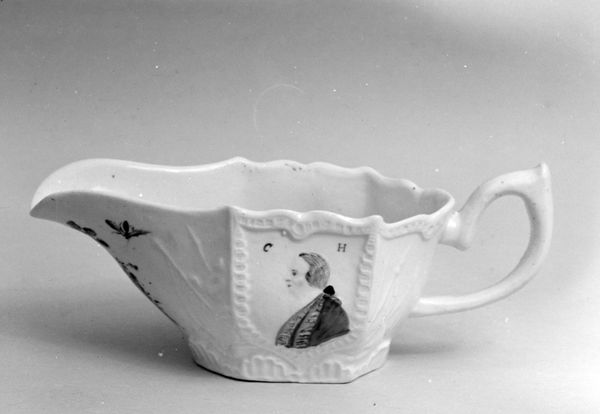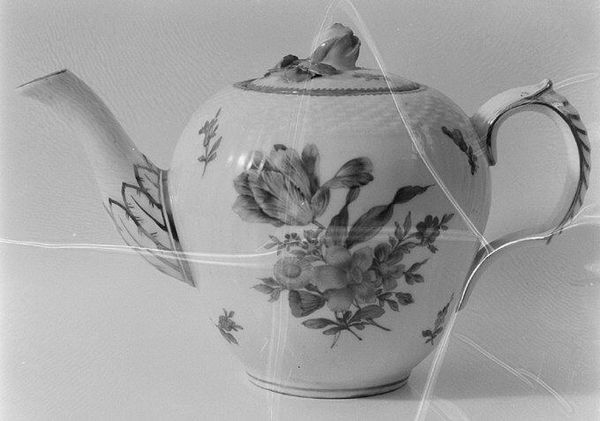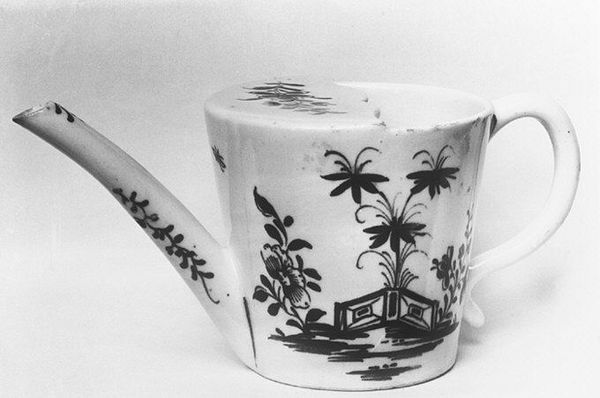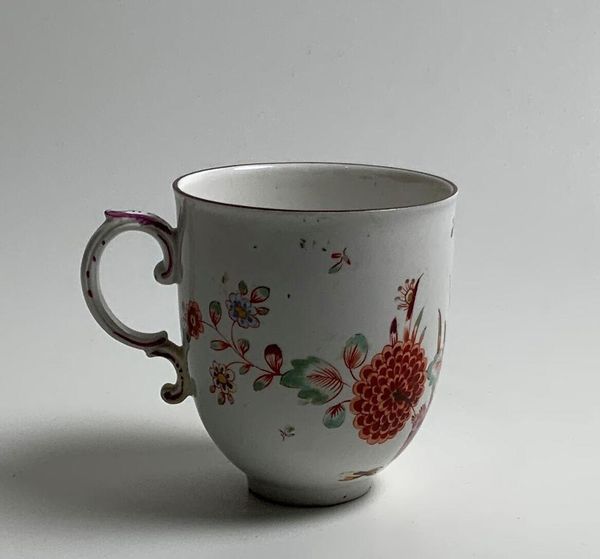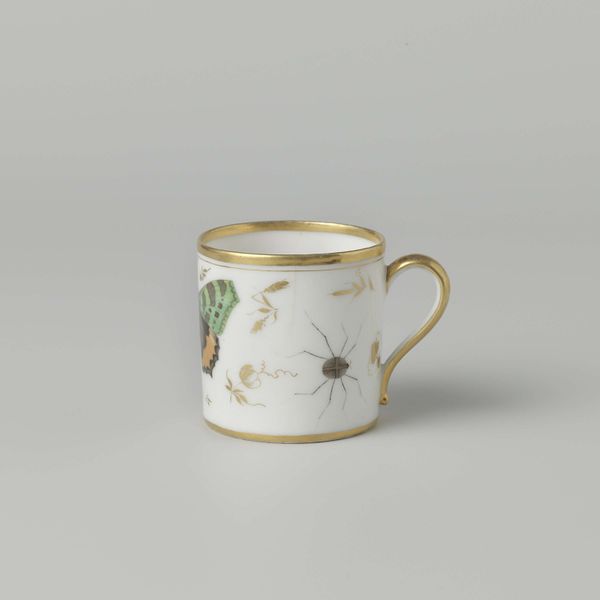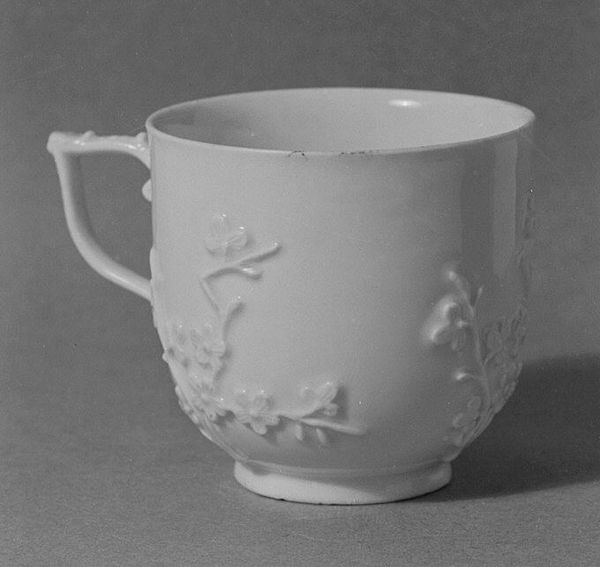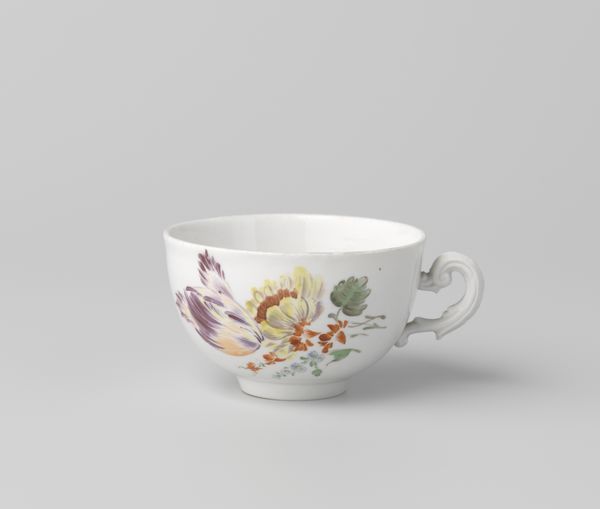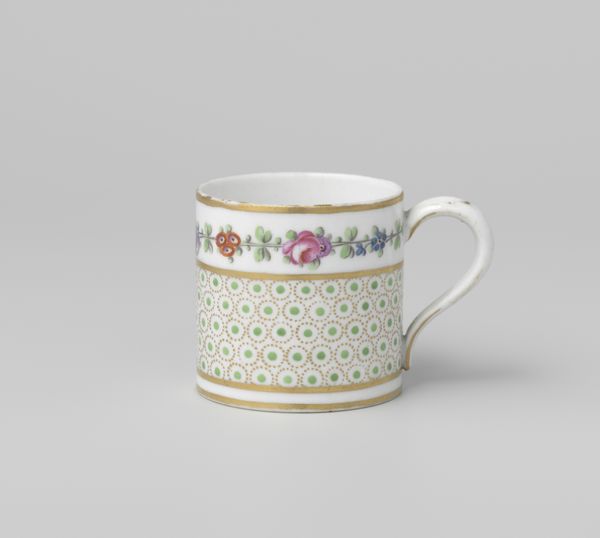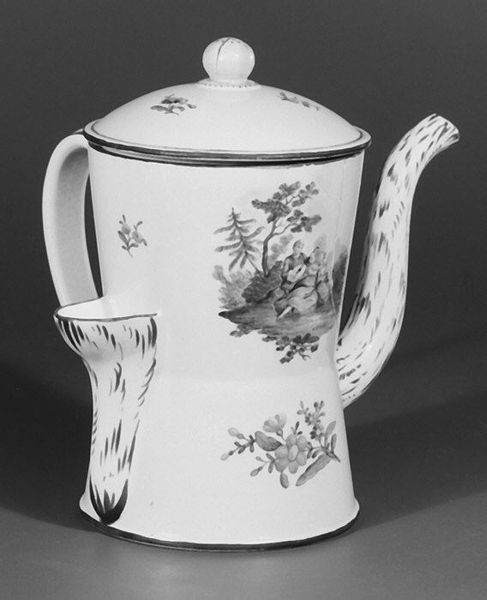
print, ceramic, porcelain, sculpture
# print
#
ceramic
#
flower
#
porcelain
#
sculpture
#
decorative-art
#
rococo
Dimensions: Height: 2 3/8 in. (6 cm)
Copyright: Public Domain
Editor: So, this lovely ceramic cup, titled simply "Cup," was crafted sometime between 1750 and 1760 by the Derby Porcelain Manufactory. The delicate floral design is quite striking, yet subdued in grayscale. How would you interpret its significance within its historical context? Curator: It's fascinating how a simple object like a cup can reflect larger societal trends. Porcelain production in the 18th century was a highly competitive industry, deeply embedded in the politics of trade and national identity. Factories like Derby, as a British manufacturer, actively sought to capture markets dominated by Chinese and other European producers, but that came later with different materials like bone china, don't you think? Editor: It seems that the decoration on the cup are transferred prints. I know very little about that technique. Curator: Exactly, the use of print demonstrates an important aspect of the manufactory: mass production to bring fashionable, luxury items to a broader segment of society. Decoration through printed design meant reducing the number of specialized, highly-paid painters on staff. That said, how do you think this impacted public perceptions of art and craftsmanship at the time? Editor: Well, on one hand, maybe it democratized access to beautiful objects, but perhaps it also devalued the artist's hand, shifting value from artisan skill to broader consumer appeal. Curator: Precisely. What seems a simple, charming design speaks to tensions between artistic integrity, mass production, consumer culture, and also, this Rococo obsession with nature and beauty. This also says something about museums preserving utilitarian items from earlier eras, as beautiful yet somewhat mundane objects for study and appreciation. Editor: I never considered how much history could be packed into a teacup! This was incredibly enlightening! Curator: Absolutely. Everyday objects often provide the most intimate glimpses into the lives, values, and the cultural landscapes of the past. It enriches one's view on artistic endeavors as culturally grounded activities.
Comments
No comments
Be the first to comment and join the conversation on the ultimate creative platform.
